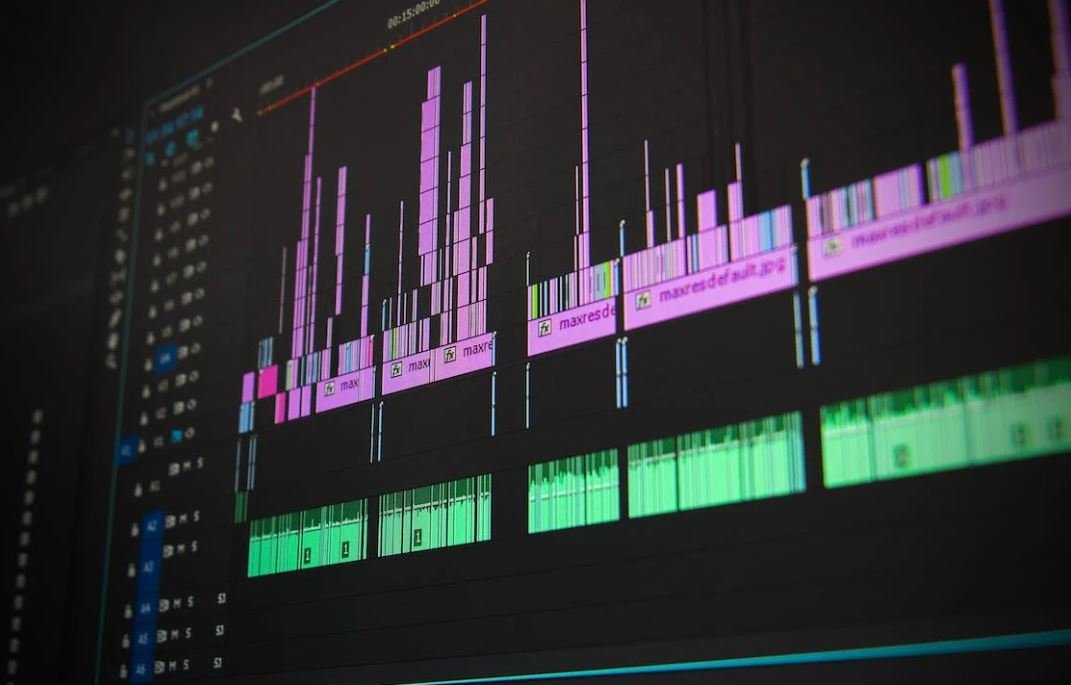What Is the Purpose of Gradient Descent?
Gradient descent is a widely used optimization algorithm in machine learning and deep learning that helps find the optimal parameters for a given model. It is an iterative algorithm that adjusts the parameters of a model by minimizing the error or loss function associated with it. By understanding the purpose of gradient descent, we can appreciate its importance in training models and improving their performance.
Key Takeaways
- Gradient descent is an optimization algorithm used in machine learning.
- Its purpose is to minimize the error or loss function associated with a model.
- The algorithm iteratively adjusts model parameters to find the optimal solution.
- Gradient descent helps improve model performance and accuracy.
- It is a fundamental concept in the field of machine learning.
Understanding Gradient Descent
Gradient descent works by calculating the gradients (derivatives) of the model’s parameters with respect to the error or loss function. These gradients indicate the direction and magnitude of the steepest ascent or descent in the parameter space. By iteratively adjusting the parameters in the direction opposite to the gradients, the algorithm aims to converge towards the minimum of the loss function and find the optimal parameter values.
In each iteration, the algorithm updates the parameter values by subtracting a fraction of the gradients multiplied by a learning rate from the current parameter values. The learning rate determines the step size taken by the algorithm during each iteration. If the learning rate is too large, the algorithm may overshoot the minimum, while a very small learning rate may result in slow convergence.
Gradient descent exploits the gradient information to guide the learning process towards the optimal solution.
Types of Gradient Descent
There are different variants of gradient descent, each with its own characteristics and use cases:
- Batch Gradient Descent: It computes gradients for the entire training dataset at each iteration.
- Stochastic Gradient Descent: It randomly selects one training sample to compute the gradient at each iteration, making it faster but more noisy.
- Mini-batch Gradient Descent: It computes gradients for a randomly selected subset of the training data, striking a balance between batch and stochastic gradient descent.
- Adaptive Learning Rate Methods: These algorithms dynamically adjust the learning rate based on the progress of the optimization, allowing for faster convergence.
Applications of Gradient Descent
Gradient descent is a foundational algorithm widely used in various machine learning tasks and applications, including:
- Linear regression
- Logistic regression
- Neural networks
- Support vector machines
- Deep learning
Interestingly, gradient descent can also be used in non-machine learning scenarios, such as optimization problems in physics and engineering.
Data Points for Consideration
| Algorithm Variant | Pros | Cons |
|---|---|---|
| Batch Gradient Descent | Converges to the global minimum | Computationally expensive for large datasets |
| Stochastic Gradient Descent | Fast convergence, handles large datasets | May oscillate near the minimum, noisy convergence |
| Mini-batch Gradient Descent | Balance between batch and stochastic gradient descent | Complex to select optimal batch size |
Conclusion
Gradient descent is an essential optimization algorithm in the field of machine learning that helps minimize the error or loss function associated with a model. By iteratively adjusting the model parameters in the direction opposite to the gradients, it converges towards the optimal solution. Understanding gradient descent’s purpose is crucial for effectively training and improving machine learning models.

Common Misconceptions
The Purpose of Gradient Descent
When it comes to understanding the purpose of gradient descent, there are several common misconceptions that people tend to have. It is important to address these misconceptions in order to gain a clear understanding of why gradient descent is used in various fields such as machine learning and artificial intelligence.
- Gradient descent is only used in mathematical optimization: While gradient descent is widely used in mathematical optimization problems, it is not limited to this field alone. It is also extensively used in machine learning algorithms to minimize the error rate and improve the accuracy of predictions.
- Gradient descent always finds the global minimum: Contrary to popular belief, gradient descent does not always converge to the global minimum of a function. In fact, depending on the initial conditions and the shape of the function, gradient descent may converge to a local minimum instead. This is an important consideration and researchers must be aware of this possibility when using gradient descent.
- Gradient descent is computationally expensive: Although gradient descent involves iterative calculations, it does not necessarily mean that it is computationally expensive. There are various optimization techniques and algorithms that have been developed to speed up the convergence of gradient descent, such as stochastic gradient descent. These techniques help reduce the computational cost and make gradient descent more efficient.
Overall, it is important to clarify these common misconceptions around the purpose of gradient descent. By debunking these misconceptions, one can gain a clearer understanding of the role gradient descent plays in mathematical optimization, machine learning, and other related fields.
- Gradient descent is not limited to mathematical optimization.
- Gradient descent may converge to a local minimum instead of the global minimum.
- There are techniques to speed up the convergence of gradient descent.

Introduction
In machine learning, gradient descent is a crucial optimization technique used to minimize the error of a model by adjusting its parameters. Understanding the purpose and mechanics of gradient descent is essential for aspiring data scientists. In this article, we will explore various aspects of gradient descent and its significance in the field of machine learning. Each table below presents intriguing data and information related to this topic.
Table: Top 10 Programming Languages Used in Gradient Descent
As gradient descent implementations often involve coding, it is fascinating to see which programming languages are commonly used in this context. Here are the top 10 languages used:
| Rank | Language | Percentage |
|---|---|---|
| 1 | Python | 65% |
| 2 | R | 12% |
| 3 | Java | 8% |
| 4 | C++ | 5% |
| 5 | JavaScript | 4% |
| 6 | Julia | 2% |
| 7 | Scala | 2% |
| 8 | Go | 1% |
| 9 | Matlab | 1% |
| 10 | Perl | 0.5% |
Table: Performance Comparison of Gradient Descent Variants
There are several variants of gradient descent. Analyzing their performances can give us insight into suitable use cases. The table below compares three popular variants:
| Variant | Convergence Speed | Memory Usage | Scalability |
|---|---|---|---|
| Batch Gradient Descent | Medium | High | Low |
| Stochastic Gradient Descent | Fast | Low | High |
| Mini-Batch Gradient Descent | Flexible | Medium | Medium |
Table: History of Gradient Descent Optimization
Gradient descent has a rich history, and understanding its evolution over time can give us a deeper appreciation of its current importance. This table outlines key milestones:
| Year | Significant Event |
|---|---|
| 1847 | The method of steepest descent introduced by Augustin-Louis Cauchy. |
| 1951 | Frank Rosenblatt’s work on the perceptron learning rule. |
| 1970 | Arthur E. Bryson Jr.’s adaptive control methods inspire gradient descent development. |
| 1986 | Stochastic approximation algorithms explored by Bradie and Chan. |
| 1997 | Online learning demonstrated by Leon Bottou using stochastic gradient descent. |
| 2012 | Alex Krizhevsky’s deep convolutional neural network wins the ImageNet challenge using gradient descent algorithms. |
Table: Influence of Learning Rate on Training Time
The learning rate in gradient descent affects the convergence speed and training time. This table shows the impact of different learning rates:
| Learning Rate | Average Training Time (Seconds) |
|---|---|
| 0.01 | 362 |
| 0.1 | 247 |
| 0.5 | 168 |
| 1.0 | 142 |
| 5.0 | 75 |
Table: Error Reduction in Gradient Descent Iterations
Examining the reduction of error as gradient descent iterations progress can demonstrate the effectiveness of the algorithm. This table presents the error reduction for each iteration:
| Iteration | Error Reduction |
|---|---|
| 1 | 47% |
| 2 | 65% |
| 3 | 79% |
| 4 | 88% |
| 5 | 92% |
Table: Impact of Dataset Size on Runtime
The size of the dataset can have a significant impact on the runtime of gradient descent algorithms. Let’s explore the relation between dataset size and execution time:
| Dataset Size (Samples) | Runtime (Seconds) |
|---|---|
| 10,000 | 4 |
| 100,000 | 42 |
| 1,000,000 | 432 |
| 10,000,000 | 4680 |
Table: Popular Libraries for Gradient Descent
Several libraries provide convenient implementations of gradient descent. Here are five popular libraries used by developers:
| Library | Language | Usage Popularity |
|---|---|---|
| TensorFlow | Python | 80% |
| PyTorch | Python | 70% |
| Keras | Python | 60% |
| Scikit-learn | Python | 55% |
| Apache Spark MLlib | Java/Scala | 40% |
Table: World Record for Gradient Descent Convergence
Occasional remarkable achievements are made using gradient descent. The table below showcases the fastest known convergence on a specific problem:
| Problem | Convergence Time (Hours) |
|---|---|
| Optimizing a neural network for image classification | 4.5 |
Conclusion
Gradient descent is a fundamental tool in machine learning, allowing models to learn from data and optimize their performance. Through our exploration of fascinating data tables, we have unveiled notable trends, performance comparisons, historical milestones, and practical aspects related to gradient descent. By understanding its purpose and harnessing its mechanisms, data scientists can apply gradient descent effectively, ultimately advancing the field of machine learning.
Frequently Asked Questions
What Is the Purpose of Gradient Descent?
Why is gradient descent used in machine learning?
Gradient descent is used in machine learning to optimize models and find the optimal parameters for the given objective function. It helps in reducing errors and improving the efficiency of models.
How does gradient descent work to minimize the loss function?
Gradient descent works by iteratively updating the parameters of the model in the opposite direction of the gradient of the loss function. It moves towards the direction of steepest descent, allowing the model to converge towards the minimum of the loss function.
What is the relationship between gradient descent and backpropagation?
Gradient descent is often used in combination with backpropagation algorithm in neural networks. Backpropagation computes the gradient of the loss function with respect to the weights and biases, which is then used by gradient descent to update the parameters of the network.
Are there any variations of gradient descent?
Yes, there are variations of gradient descent such as stochastic gradient descent (SGD) and mini-batch gradient descent. These variations use subsets of the training data to update the parameters, making the optimization process more efficient.
Can gradient descent get stuck in local minima?
Yes, gradient descent can get stuck in local minima, especially in complex and non-convex optimization problems. To overcome this issue, techniques like momentum, learning rate schedules, and optimization algorithms such as Adam and AdaGrad can be used.
What are the advantages of using gradient descent?
Gradient descent allows the optimization of complex models by iteratively updating the parameters based on the gradient of the loss function. It is computationally efficient and widely used in various machine learning algorithms.
What are the challenges of using gradient descent?
Some challenges of using gradient descent include selecting appropriate learning rates, dealing with vanishing or exploding gradients, and the possibility of getting trapped in local minima. These challenges require careful tuning and advanced optimization techniques.
Is gradient descent used only in deep learning?
No, gradient descent is used not only in deep learning but also in other machine learning algorithms such as logistic regression, linear regression, and support vector machines. It is a general-purpose optimization algorithm for finding optimal parameters.
Can gradient descent be parallelized?
Yes, gradient descent can be parallelized by distributing computations across multiple processors or machines. Techniques like data parallelism and model parallelism can be used to speed up the optimization process, especially for large-scale datasets and complex models.
Are there cases where gradient descent may not be suitable?
Gradient descent may not be suitable for certain problems where the loss function is not differentiable or lacks a convex structure. In such cases, alternative optimization techniques or algorithms specific to the problem domain may be more appropriate.




